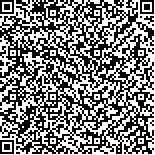杨之雪,朱正威,贺舟,等.推拿联合跑台训练对急性骨骼肌损伤大鼠肌蛋白代谢相关因子的影响[J].中华物理医学与康复杂志,2020,42(5):385-391
扫码阅读全文

|
| 推拿联合跑台训练对急性骨骼肌损伤大鼠肌蛋白代谢相关因子的影响 |
|
| |
| DOI:10.3760/cma.j.issn.0254-1424.2020.05.001 |
| 中文关键词: 急性骨骼肌损伤 推拿 跑台训练 蛋白代谢 |
| 英文关键词: Muscle injury Tuina Treadmill running |
| 基金项目:国家自然科学基金项目(81273870);国家自然青年科学基金项目(81603689);重庆医科大学重点项目(201708) |
|
| 摘要点击次数: 5317 |
| 全文下载次数: 6473 |
| 中文摘要: |
| 目的 观察推拿、跑台训练及联合干预对急性骨骼肌损伤大鼠腓肠肌蛋白代谢信号通路相关分子雷帕霉素靶蛋白(mTOR)、磷酸化(p-)mTOR、p70核糖体蛋白S6激酶(p70S6K)、p-p70S6K、Smad2/3、肌生成抑制素(MSTN)表达的影响,探讨骨骼肌修复的可能机制。 方法 采用随机数字表法将30只雄性SD大鼠分为正常组、自然恢复组、推拿组、跑台组及联合组。通过打击器制备大鼠右后肢急性骨骼肌损伤动物模型。于造模24 h后推拿组予以患侧拇指揉法干预,跑台组予以跑台训练,联合组则予以推拿及跑台训练联合干预;各组大鼠每周干预5次,连续干预3周。于干预结束后进行行为学检测,分析各组大鼠步态并统计落入电网次数,采用HE染色测定腓肠肌纤维横截面积,采用免疫印迹法检测mTOR、p-mTOR、p70S6K、p-p70S6K、Smad2/3蛋白相对表达量,采用实时荧光定量PCR法检测腓肠肌中MSTN mRNA相对表达量。 结果 电网打击实验结果显示,推拿组、跑台组及联合组被打击次数均较自然恢复组明显减少(P<0.05)。推拿组、跑台组及联合组肌纤维横截面积、患侧腓肠肌湿重均较自然恢复组明显增加(P<0.05);且跑台组、联合组肌纤维横截面积亦较推拿组明显增大(P<0.05)。与正常组比较,自然恢复组、推拿组、跑台组及联合组mTOR、p-mTOR、p70S6K、p-p70S6K蛋白相对表达量均明显升高(P<0.05),Smad2/3蛋白相对表达量和MSTN mRNA相对表达量均明显降低(P<0.05);与自然恢复组比较,推拿组、跑台组及联合组mTOR、p-mTOR、p70S6K、p-p70S6K蛋白相对表达量均明显升高(P<0.05),Smad2/3蛋白相对表达量及MSTN mRNA相对表达量均明显减少(P<0.05);与推拿组比较,跑台组及联合组mTOR、p-mTOR、p70S6K、p-p70S6K蛋白相对表达量均明显增加(P<0.05),Smad2/3蛋白相对表达量及MSTN mRNA相对表达量均明显降低(P<0.05)。 结论 早期推拿、跑台训练及联合干预均可能通过抑制Myostatin-Smad2/3信号通路,促进mTOR-p70S6K信号通路来增加急性骨骼肌损伤大鼠肌蛋白合成,促进肌肉肥大,改善损伤后腓肠肌结构及功能,且以跑台训练及跑台训练联合推拿干预的疗效较显著。 |
| 英文摘要: |
| Objective To investigate the effects of tuina, treadmill running or both on the expression of factors related to gastrocnemius muscle proteins after acute muscle injury and to explore the mechanisms involved. Methods Thirty adult male Sprague-Dawley rats were randomly divided into a control group, a natural recovery group, a tuina group, a treadmill running group and a combined treatment group, each of 6. An impactor was used to induce an acute skeletal muscle injury in the right hind legs of all of the rats except those of the control group. One day after the successful modelling, the tuina, treadmill running and combined groups were given interventions as their name implied, 5 times a week for 3 weeks. The gait of rats in each group was analyzed and the number of times the rats fell into and striken by the electrical grid was counted. The injured muscles′ cross-sectional areas (CSAs) and the diameters of muscle fibers were observed using hematoxylin and eosin staining. The expression of mTOR, p-mTOR, p70S6K, p-p70S6K and smad2/3 protein were tested using western blotting. The relative expression of myostatin (MSTN) mRNA was measured using real-time quantitative polymerase chain reactions. Results Compared with the natural recovery group, all the other groups fell into the electrical grid significantly less often. The average CSA and wet weight of the affected gastrocnemius had increased significantly in the tuina, treadmill running and combined treatment groups, with the average CSA increases in the treadmill running and combined treatment groups significantly greater compared with the tuina group. The average relative expression of mTOR, p-mTOR, p70S6K, and p-p70S6K in the other four groups increased significantly compared with the control group, while that of Smad2/3 and MSTN decreased significantly. Compared with the natural recovery group, the average increases in the other groups were significantly greater. Compared with the tuina group, the treadmill running and combined treatment groups showed significantly better improvements, on average. Conclusions Tuina, treadmill running and their combination all can improve recovery from skeletal muscle trauma, at least in rats. However, treadmill running and combined treatment are more effect than tuina alone. |
|
查看全文
查看/发表评论 下载PDF阅读器 |
| 关闭 |
|
|
|